Having the best worms for bass fishing is like having an ice-cold beer after a long hard day.
It just seems like certain things were meant to be.
For me, I believe that fishing with worms is the best way to catch bass.
They’re versatile, they come in many different colors and shapes, and you can rig them up a few different ways to appeal to the current situation.
I think the most important reason I love worm fishing for bass is because it works.
Bass will always bite a worm, but that doesn’t mean you’ll get a fish on at every cast.
You need the best worms for bass, as well as the right techniques to hook a fish with this strategy.
In this guide, I’m going incredibly deep into the world of bass fishing and teaching everything I’ve learned over the years from multiple generations of bass anglers.
Before I get to that, let’s take a look at some of the top picks.
YBG Community Coordinator Wesley Littlefield gives us his opinion of the best fishing worms in this YouTube video. They’re NOT what you’re thinking!
Our Reviews of the Best Worms for Bass Fishing
Zoom Trick Worm

BEST OVERALL
Specs
- Size/Weight: 7 inches
- Colors: 13 color variations
FEATURED SPECS
- These worms are salt impregnated and segmented to offer the most natural slithering action possible.
EXTRA FEATURES
- They work great for twitching and deadsticking.
BUYING ADVICE
- Many experts recommend using these with a shaker head or Carolina rig because it provides a bit of uniqueness to the lure, and bass aren’t as familiar with it.
Pros
- Multiple rigging options
- Many color variations
- Salt impregnation is deadly
Cons
- Couldn’t find one if I tried
Sometimes there’s a product out there that trumps the rest, and this is the one. These worms are deadly with bass, and the salt impregnation helps the bass hold on longer, which gives you more time to set your hook.
Gary Yamamoto Senko Worm
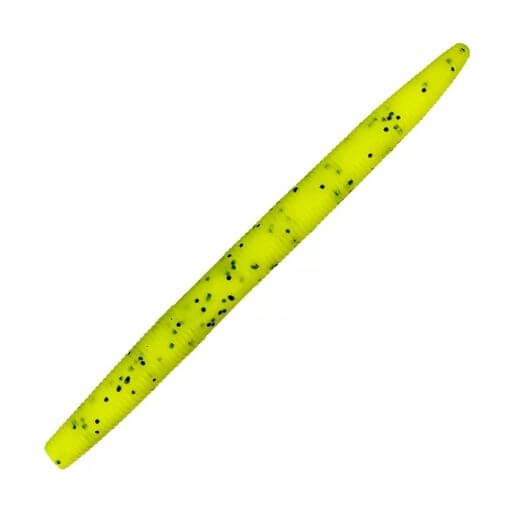
BEST PLASTIC WORM
Specs
- Size/Weight: .3-5 inches
- Colors: 25 color variations
FEATURED SPECS
- These cast like a bullet so you’re able to place your cast right along structure or vegetation accurately.
EXTRA FEATURES
- They’re salt impregnated which forces the bass to hold on longer, and they have a smooth horizontal drop if you fish them weightless.
BUYING ADVICE
- I use this lure in the dead of summer when there is a lot of vegetation and have incredible success. I’ve been doing this for years.
Pros
- Salt impregnated causes bass to hold on longer
- Great for wacky rig
- Irresistible throbbing action in the water
Cons
- Some say they’re overrated and too fragile
To learn more about this worm and how to fish it, take a look at our video below which is an exclusive interview we did with the man himself, Gary Yamamoto.
Berkley Gulp! Floating Pinched Crawler
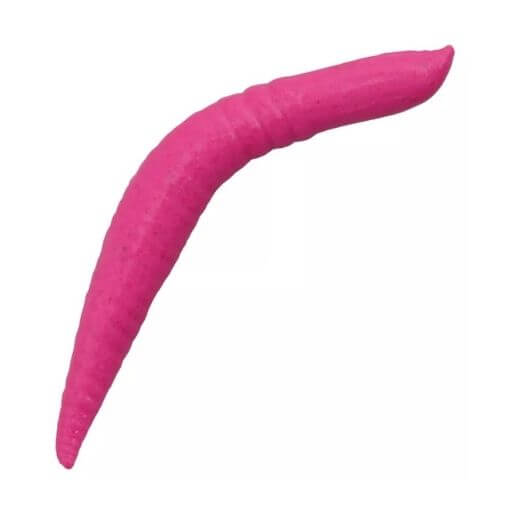
BEST RUBBER WORM
Specs
- Size/Weight: 1 inche / 1.7 ounces
- Colors: Natural nightcrawler color
FEATURED SPECS
- These float long enough to remain in the strike zone of bass slightly under the surface.
EXTRA FEATURES
- They come with a garlic scent that is irresistible for bass, and their natural appearance enhances the likelihood of a strike.
BUYING ADVICE
- You’ll need to use a bobber or a split shot for these because they sit right under the surface of the water. Many say that these aren’t an ideal choice for bass, but look around, and you’ll find some anglers benefiting from stepping outside the box a little.
Pros
- Berkley is a household name
- Attractive scent
- Realistic and lifelike appearance
Cons
- Not always ideal for bass (more geared for panfish)
Culprit Original Worm
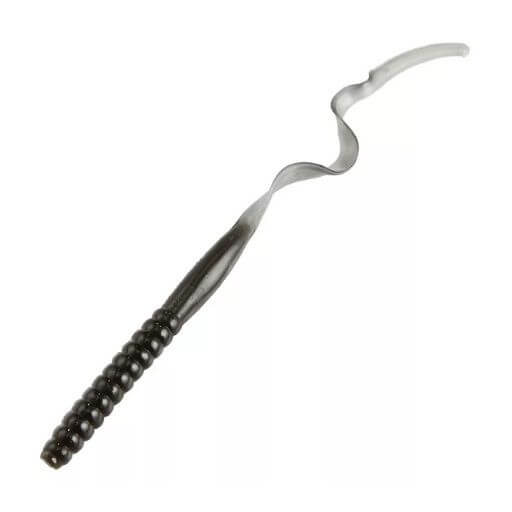
BEST ARTIFICIAL WORM
Specs
- Size/Weight: 6-12 inches
- Colors: 8 color variations
FEATURED SPECS
- Comes with a kicking curly tail at the end that produces a powerful action and creates a lot of noise in the water.
EXTRA FEATURES
- The innovative body design has ripples and rolls that make a lot of vibration.
BUYING ADVICE
- Overall, these are the best artificial worms for bass because everything about them draws attention to the worm. Make sure you size and color it right.
Pros
- Highly attractive design
- Powerful kicking tail
- Many color and size options
- Ribbon tail worm
Cons
- Too big for some
Strike King KVD Finesse Worm
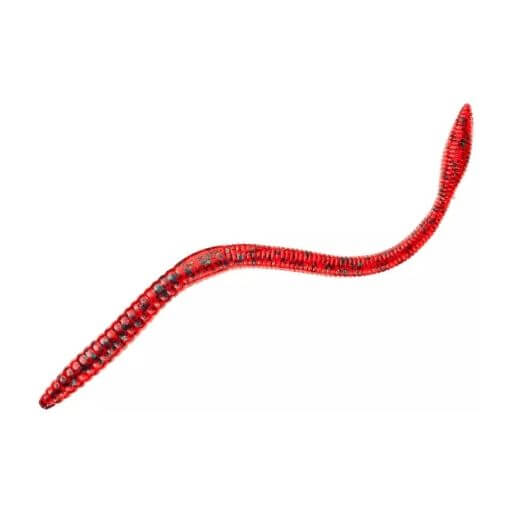
BEST PLASTIC WORM FOR LARGEMOUTH BASS
Specs
- Size/Weight: 5-6.5 inches
- Colors: 5 color variations
FEATURED SPECS
- Great choice for drop shots and shaky jigs which makes this an ideal option for largemouth.
EXTRA FEATURES
- These are salt impregnated to help the bass strike harder and stay longer so you can set the hook.
BUYING ADVICE
- In addition to salt impregnation, these are scented with coffee to mask human smells, use them along banks.
Pros
- Highly attractive formula
- Comes in a pack of 10
Cons
- Could have more size and color options
Worm Fishing for Bass: How to Fish With Plastic Worms

Now that we’ve seen some examples of the best worms for bass fishing let’s take a look at some plastic worm techniques so you can learn more about how to use them. There are a few different strategies and methodologies here, and I want to break them all down into as much detail as possible.
Where to Fish Worms
First, let’s talk about where we should be fishing. When you’re looking for bass, there are a few things you should always be looking for.
- Structure – Any form of dock, building, fallen debris, old car, or whatever
- Vegetation – Lily pads, leaves, low tree, cattails, etc
- Stumps – Tree stumps, full trees, fallen logs
These are the areas you want to fish for bass, so these are the things you’re looking for when fishing with worms as well. It sounds silly, but you want to think like a worm right now and think about where a worm would be in the water.
The worm isn’t going to be 25 yards out from the shore in open water; the worm is going to be crawling along logs and vegetation near the shoreline, and as soon as it’s in enough open water for the bass to get it, that’s when they’ll strike. This is the presentation we’re trying to mimic here.
If you’re fishing from a boat, you always want to approach the shoreline and cruise along while casting near structure, vegetation, stumps, ledges, and changes in the base of the lake. These are the areas where the bass are, and they’ll always bite worms when you know where to find them.
How to Cast and Retrieve Worms
The way you’ll present the worm will vary depending on the way you rig it (something we’ll talk about shortly). Before we get into that, I want to talk a little about the casting style and something you should think about in terms of your line.
You’re trying to create the most ideal presentation, and you need to also get an accurate cast to reach the right location. Most people will go with a standard overhead cast and an 8-pound test monofilament. I always use the best spinning reels with my rubber or plastic worms, and there is one super important detail to remember.
Bass don’t “eat” worms, but instead, they suck them up, so it’s important that you keep your line taut at all times. Don’t allow too much slack, or the bass will take your worm and rip your line.
When you’re retrieving the worm, you should understand that you’re creating the presentation with your reel. Most worms don’t have any fancy mechanism like some other bass lures, so you’re in charge, but the action is quite simple. Don’t go too fast; otherwise, it won’t look natural and don’t go too slow, or it won’t look natural. Simple right?
It’s actually a lot harder than it sounds because you can’t see the lure, and you don’t know what type of presentation you’re creating. Ideally, you want to create a twitching motion with the worm in between retrievals, so it goes something like this.
Twitch, reel in a little, stop. Twitch, reel in a little, stop. You’ll repeat that process till you get back to the boat. The twitch part is the actual presentation of the worm, and the reel in a little part is you tightening the slack. You shouldn’t be actually “reeling in” an artificial worm.
Different Types of Worms to Fish With
Now let’s talk about worm styles. You’ve got soft plastic worms, rubber, different artificial worms, and even live worms.
Live Worms
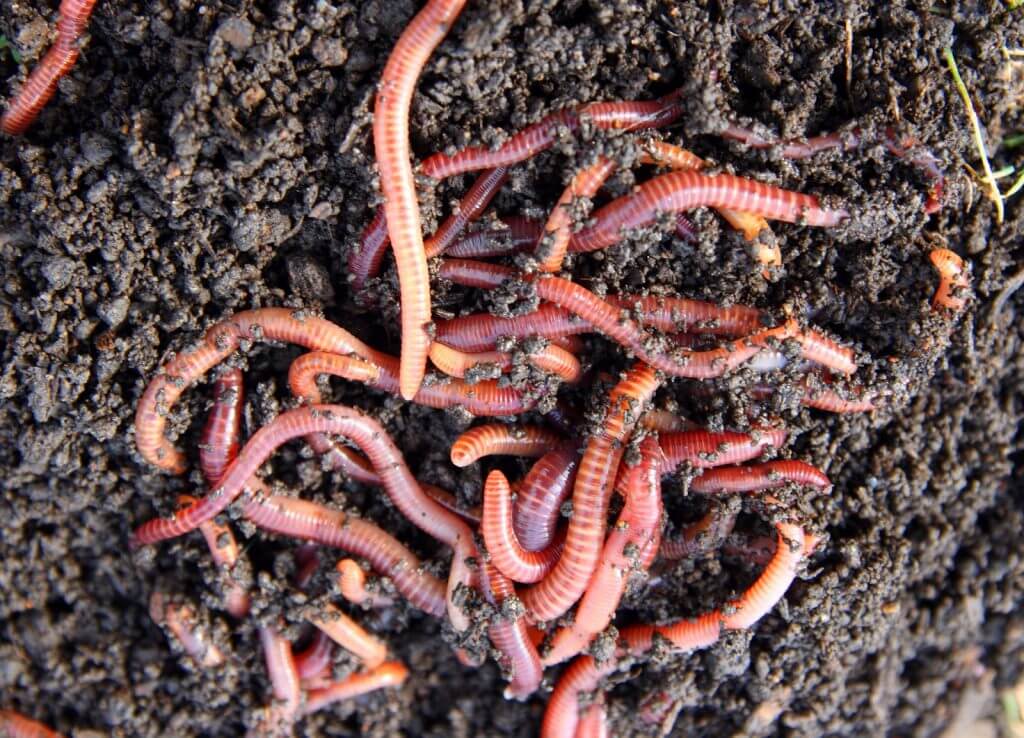
There are some interesting points to talk about when it comes to fishing with live worms. What many people don’t realize is that most bass have never even seen a worm. They live on land, so why do we even fish worms in the water then?
There was a study done by Berkley Fish Research that proved that bass are up to ten times more likely to strike a hook with a worm on it compared to any other lure or bait. There is little understanding of why this is, but it’s what they discovered.
With live worms, you have three choices:
- Nightcrawlers
- Red Worms
- Mealworms
You can go digging around your yard or flipping over rocks to find some nightcrawlers and red worms, but if you want to get mealworms, you’ll likely have to go to a local bait shop.
If you hadn’t guessed it, the key to fishing with live worms is keeping them alive. They’ll stay alive in the refrigerator for quite a while in a box with holes. You should add some wet soil in there and some leaves and grass to give them something to munch on.
One of the best things about fishing with live worms for bass is that they create the presentation themselves. You don’t need much more than a drop shot or a bobber to fish with live bait. If you’re fishing the river, make sure you’re fishing downstream because that will create the most natural and enticing presentation.
When you’re rigging the live worms, make sure to cover as much of the hook as possible while still leaving the worm exposed to create the action.
Plastic Worms
I won’t get too far into it here because you likely already know how to fish with plastic, but you could use some information on how to rig them. The one thing to remember about plastic is that a lot of them float on the water or just beneath the surface. As a result, you’ll need something to weigh them down if you want them to sink down to a certain depth.
If you’re using a fish finder, you’ve already got this covered, but if you’re not, you’ll have a hard time figuring out the correct depth to present them, so that’s your challenge there.
The main difference between plastic and rubber is the feel that bass get when they strike. The more natural the feeling, the harder they’ll strike, and the easier it is for you to set your hook.
Rubber Worms
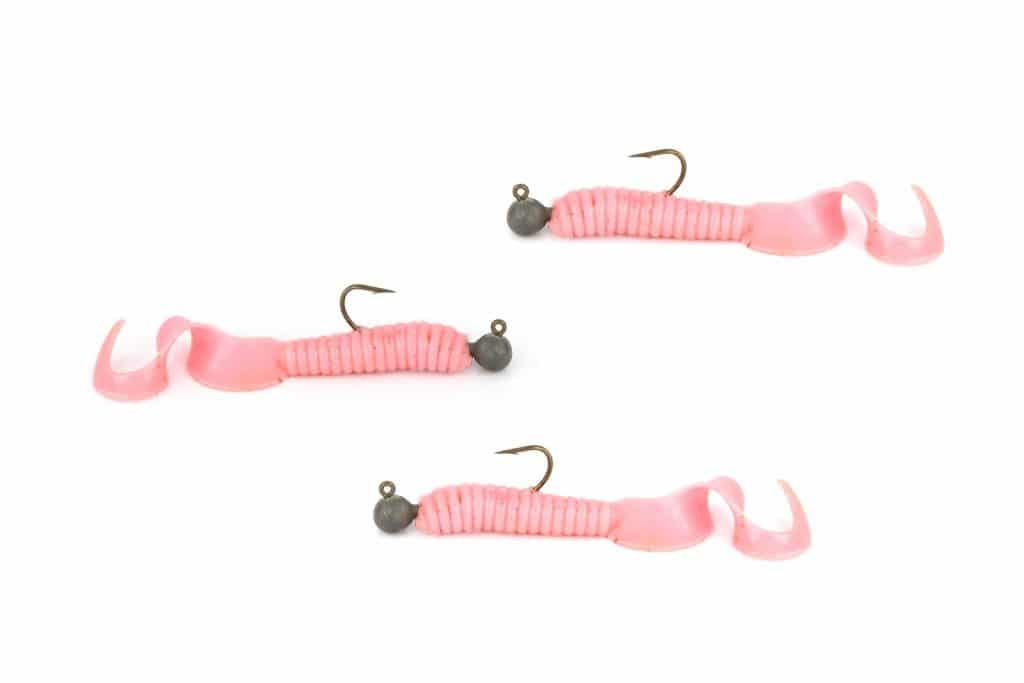
When it comes to rubber worms, what you want to pay attention to is any scent or attractant they’re using on the rubber to get bass to strike. There isn’t really a right or wrong time to choose plastic over rubber or vice versa, so it’s really up to you. I would recommend swapping between the two and giving them each a try. Sometimes it depends on the bass you’re fishing for and what they’re used to seeing in your local ponds and lakes.
How to Rig a Plastic Worm
Everyone wants to know how to properly rig a worm and how to know which rig you should use. In this section we’re breaking down the following worm fishing techniques:
- Texas rig
- Carolina rig
- Wacky rig
- Drop Shot rig
- Ned rig
Let’s do it!
Texas Rig
The Texas rig is the most popular and common choice among bass anglers. It’s been around forever, and we still see it used every day. The main reason most bass fishermen prefer this rig is because it makes the worm weedless.
When a worm is weedless, it means you can cast into heavy vegetation without bringing five pounds of weeds back with you thinking you’ve got a musky on the end of your line.
This rig works with any type of worm and bullet weight, but you could use a hook without a weight as well, but you’ll have a hard time getting a decent casting distance that way. Essentially, to rig Texas-style, you’ll place the end of the hook back through the worm, so the barb is no longer exposed.
This rig requires the bass to strike a bit harder, but it provides you with more flexibility as to where you want to cast.
Carolina Rig
The Carolina rig is the same as the Texas rig, but there’s a leader in between the worm and the weight. At the end of the line on the weight side is a glass bead and a swivel. From there, you’ll attach about a 12-inch leader to the swivel and then rig your hook Texas-style just like we did in the previous example.
The advantage here is that the worm can swim more naturally because the weight will drag along the bottom while the worm swims a foot higher instead of being directly attached to the weight and forced to crawl along the bottom.
Wacky Rig
If you’ve read any of my articles, you’ll know that this is my favorite way to rig a worm. Basically, you’re puncturing the worm right in the middle using a weedless hook and a wacky ring to keep everything together.
If you’re talking to an inexperienced angler, they might think you’re crazy for fishing this way, but I’ll tell you that this method works like a charm, and using the retrieval strategy I gave you previously is the best way to fish this style.
The only potential and apparent downside to fishing like this is losing worms because they’ll come off more easily, and bass will chew them apart more frequently as well. You can fish live worms this way as well. These work a bit better in clear water.
Drop Shot

The drop shot is almost the same thing as the Carolina rig. The only difference is the lack of a “leader” in the traditional sense of the word. You do still have a leader, but you’re using your spooled line as the leader and simply tying your hook a foot or so from the end instead of on the end.
At the end of your line, you’ll place a drop shot weight and a swivel, and this will leave you with two fishing styles. You can bounce the sinker off the bottom, mimicking an injured worm or an easy meal for the bass. You can also leave the weight and drag it smoothly while shaking the worm, which is more ideal for a finesse style of fishing.
In the product reviews, I recommended the Strike King Finesse Worm as the best plastic worm for largemouth bass. They enjoy this finesse style and will always strike it, so if you’re looking for largemouth, consider this technique.
Ned Rig
The Ned rig is something I actually just learned about, and chances are you’ve never heard of it either! Apparently, it’s a popular new finesse style of fishing worms in tough water and weather conditions. To me, it looks like a worm with a jig, and that’s nothing new, but it’s gained so much popularity that they’ve given it a new name.
For this, you’ll use a short worm-like the Berkley Gulp Nightcrawler, fit it with a jig head, and bang it around the rocks a little to stir up some noise and attention.
Final Tips and Tricks
Before I close this one out, I want to offer a few last-second bass fishing tips.
- Always choose colors that mimic your surroundings. If it’s cloudy or rainy, go with a dark, dull and natural color worm. Save the watermelon and green pumpkin color for bright days.
- Size up your worms when it’s hot and size down your worms when it’s cold.
- Live worms have a powerful scent that attracts bass, so if you’re serious about this, take some of your artificial worms and store them with live worms to mesh the two scents together.
- Don’t fish wacky style rigs in dense vegetation because you’ll lose a lot of worms and bring in a lot of weeds.
- Make sure you have the right hook for each rig style.
That’s all I’ve got! Thanks for reading and I hope this helps you.


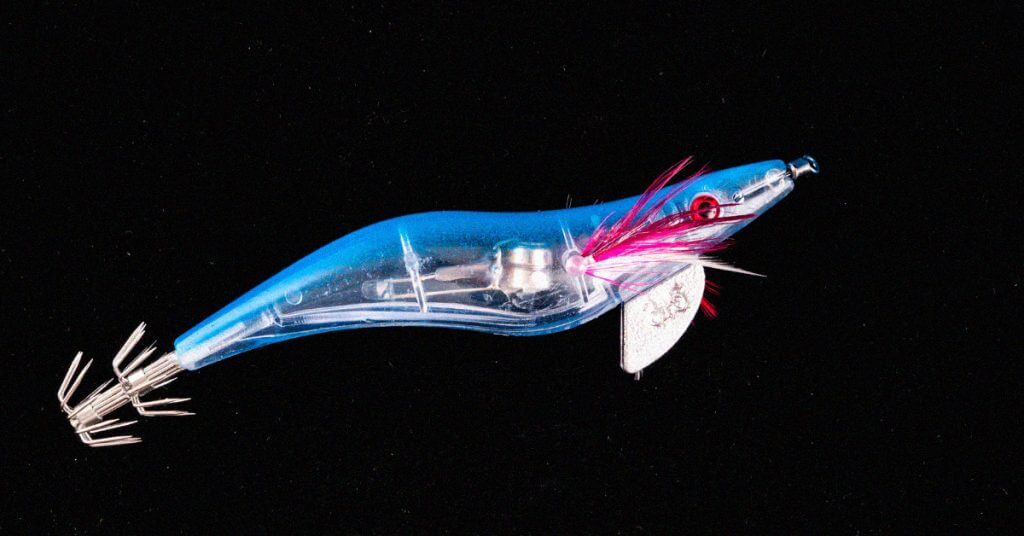

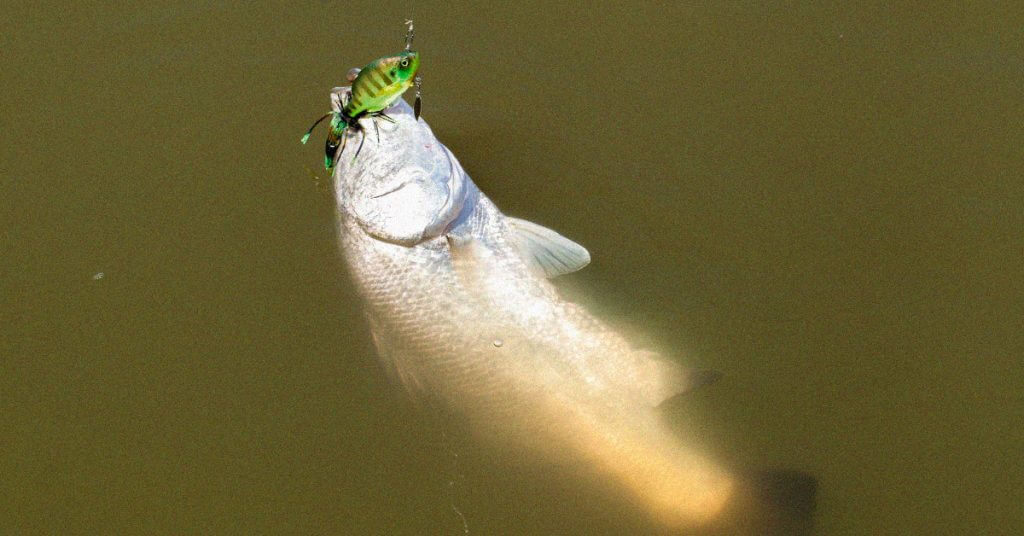
Your teachings very helpful
Thanks so much!
Great article. I have been bass fishing all of my life and it seems like you can always get one on a worm. The tactic and type of worm may change, but they always work. We were out fishing yesterday and couldn’t buy a bite until we switched to the worm. Both the Texas rig and the drop shot were working, but the drop shot outperformed the Texas tig this time.
Thanks Jonathan, I agree. I always want to try throwing different lures but I usually end up going right back to my trusty soft plastic worm in the end!